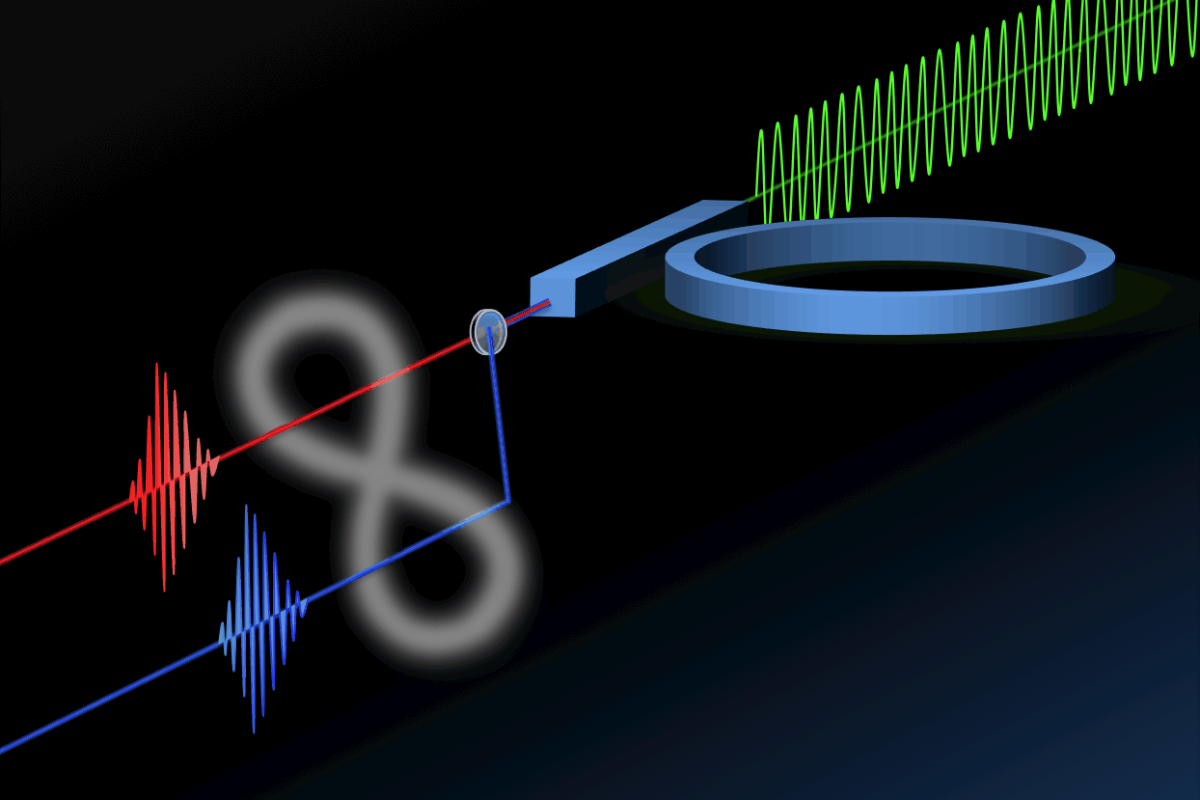The quantum entanglement of particles, such as photons, is a prerequisite for the new and future technologies of quantum computing, telecommunications, and cyber security. Real-world applications that take advantage of this technology, however, will not be fully realized until devices that produce such quantum states leave the realms of the laboratory and are made both small and energy efficient enough to be embedded in electronic equipment. In this vein, European scientists have created and installed a tiny "ring-resonator" on a microchip that is claimed to produce copious numbers of entangled photons while using very little power to do so.
Entangled photons have been produced on a silicon chip before, but the number of pairs produced was low, and the amount of energy required to achieve this was prohibitively high – especially on a low-powered device such as a silicon chip. This is where the new micro-ring resonator claims its points of difference.
Created in a collaborative effort between scientists at the Università degli Studi di Pavia, Italy, the Universities of Glasgow and Strathclyde, Scotland, and the University of Ontario, Canada, the new micro-ring resonator at the heart of this work takes the form of a loop etched onto a silicon wafer substrate. By precisely engineering the properties of this tiny device, the researchers have made it produce light in the form of entangled photons. And, by keeping its size down to the micron level and achieving exceptional power efficiencies, they have also made it an ideal candidate for use as an on-chip component.
"The main advantage of our new source is that it is at the same time small, bright, and silicon based," said Daniele Bajoni, a researcher at the Università degli Studi di Pavia. "The diameter of the ring resonator is a mere 20 microns, which is about one-tenth of the width of a human hair. Previous sources were hundreds of times larger than the one we developed."
With ordinary entangled photon emitters generally being produced with specialty crystals and unable to be miniaturized to much less than a couple of millimeters or so, the researchers looked at alternatives in their early research. Happening upon an existing optoelectronic component, the micro-ring, the scientists soon realized that these devices – already etched onto silicon chips – could be modified to produce co-mingled photons for quantum entanglement. And with low power requirements, an inbuilt resonator, and able to produce photons with a relatively low-powered laser beam, the micro-ring resonator provided the ideal environment for light particle experimentation.
A micro-ring (or optical ring) resonator is a device that essentially uses the same principles as those found in whispering galleries, except that instead of sound, they use light. When light of a wavelength resonant ("in tune") with the loop is input from a laser via a waveguide, its intensity increases as it completes multiple circuits around the device until it is finally emitted as a very bright beam of photons at the output..
After some experimental tinkering and tailoring, the scientists were very pleased to find that the micro-ring device they had decided to use was an admirable choice. When the device was "pumped" with a laser, a high number of the subsequent photons streaming from the resonator showed all the hallmarks of quantum entanglement.
"Our device is capable of emitting light with striking quantum mechanical properties never observed in an integrated source," said Bajoni. "The rate at which the entangled photons are generated is unprecedented for a silicon integrated source, and comparable with that available from bulk crystals that must be pumped by very strong lasers."
Using an already established technology to produce their device, the scientists are confident that the application of their modifications may well soon see the production of silicon chips with inbuilt micro-resonators embedded in modern electronic equipment.
"In the last few years, silicon integrated devices have been developed to filter and route light, mainly for telecommunication applications," observed Bajoni. "Our micro-ring resonators can be readily used alongside these devices, moving us toward the ability to fully harness entanglement on a chip."
The research was recently published in the journal Optics Infobase.
Source: OSA




